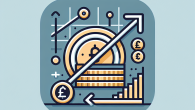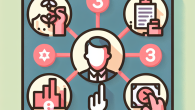
Financial Red Flags I Ignored in My 20s (And You Shouldn’t)
How to Start Budgeting When You’ve Never Done It Before
Let’s face it—budgeting doesn’t sound like the sexiest word in personal finance. It kind of feels like “dieting,” but for your wallet. But just like skipping dessert five nights a week leads to smaller pants, learning how to budget leads to bigger savings. The good kind. If you’ve never budgeted before and feel like you’re about to dive into a confusing mess of numbers, spreadsheets, and sacrifice, take a deep breath. I’m Thomas “Tom” Bradley, your go-to guy for decoding dollars into plain English, and today, we’re going to make budgeting so simple, you’ll wonder why you didn’t start sooner.
What Exactly Is a Budget?
Let’s not overcomplicate it. A budget is a plan for how you’re going to spend your money. That’s it. It’s not a spreadsheet monster that breathes fire anytime you buy a latte. It’s a tool to tell your money where to go instead of asking where it went. Think of it as your personal GPS guiding you toward a financially healthy future.
And the best part? You don’t have to be a math wizard or Excel genius to make one. With just a few basics—and yes, maybe a calculator—you’re fully equipped to take control.
Step 1: Know Your Income (Every Dollar Counts)
Before you decide where your money’s going, let’s figure out how much money you’re actually working with. Start with your net income—that’s what hits your bank after taxes, not your gross salary. Include:
- Your main job paycheck (post-tax)
- Side hustles (freelance gigs, weekend work, Etsy empires, etc.)
- Any passive income you have rolling in
Be honest here. If you’re counting birthday money from grandma and refunds from Amazon returns, you might be overestimating your cash flow.
Step 2: Track Your Expenses (No More “Where Did It Go?” Mysteries)
This part is about awareness, not judgment. Look back at the last couple of months and jot down everything you spent money on. Divide your spending into two categories:
Fixed Expenses (the boring, non-negotiable stuff):
- Rent or mortgage
- Utilities (water, electricity, internet)
- Car payments or public transport passes
- Insurance (health, auto, pet—yes, even Mr. Whiskers)
Variable Expenses (the fun, flexible stuff):
- Groceries
- Dining out
- Subscriptions (Netflix, Spotify, OnlyFans—kidding, but not really)
- Entertainment, hobbies, and Amazon impulse buys
I recommend using a budgeting app or your bank’s expense tracker to get a clear picture. Excel works if you like spreadsheets, but a napkin and a pen are still better than guessing.
Step 3: Choose Your Budgeting Method (Pick Your Style)
Now that you know what’s coming in and what’s going out, it’s time to pick the budgeting style that works for you. Here are a few beginner-friendly options:
1. The 50/30/20 Rule
This method is perfect if you’re just getting started. Here’s how it breaks down:
- 50% of your income goes to needs (housing, bills, groceries)
- 30% goes to wants (entertainment, travel, gadgets)
- 20% goes to savings and debt repayment
Easy to remember, flexible, and it builds good habits.
2. Zero-Based Budgeting
This one’s for the meticulous folks who love knowing where every single dollar is going. You assign every dollar of your income to a job—expenses, savings, debt, etc.—so when you’re done, your budget should “zero out.”
It takes more time, but it’s more accurate. Like Marie Kondo but for your bank account.
3. The Envelope System (Digital or Old-School)
This method is cash-based—great for those who tend to overspend. You withdraw cash for each budgeting category and put it into labeled envelopes. When an envelope is empty, too bad—it’s like a game show, but with real consequences.
There are also digital apps replicating this system without lumbering around with bundles of cash.
Step 4: Set Financial Goals (Short-Term and Long-Term)
Your budget isn’t just about cutting coffee—it’s about building a life you actually want. Whether you’re saving for a vacation, an emergency fund, or your first home, your goals give your budget purpose.
Break them into short-term and long-term goals:
- Short-term: Pay off $1,000 credit card debt, save $500 for holidays
- Long-term: Build an emergency fund, invest for retirement, down payment on a home
Step 5: Review and Adjust Monthly
Budgets aren’t set in stone. Life throws curveballs—flat tires, surprise birthdays, spontaneous pizza cravings. At the end of each month (or even mid-month), sit down and ask yourself:
- Did I overspend in any category?
- Did anything unexpected come up?
- Can I save more next month?
This is a judgment-free zone—progress over perfection. Even small wins are worth celebrating.
Tips to Stay on Track (Without Losing Your Mind)
- Automate savings: Out of sight, out of spend-it.
- Use alerts: Set up bank and card alerts to see where your money goes in real time.
- Reward yourself: Budget for joy, too. A little treat now and then keeps you motivated.
- Avoid comparison: Everyone’s financial journey is unique. Don’t let Instagram lie to you.
Wrapping It Up: Budgeting Is Freedom, Not Restriction
Budgeting isn’t about saying “no” all the time. It’s about saying “yes” to what actually matters. When you start telling your money where to go instead of constantly asking where it went, you gain control, confidence, and clarity.
So whether you’re a complete newbie or just finally trying to “adult,” remember: You don’t need a finance degree to win with money—you just need a plan.
If you’ve got questions, I’ve got answers. Head over to our contact us page or learn more about us here on Financeone. Thomas “Tom” Bradley signing off—for now. Happy budgeting, rookie!









Leave a Reply